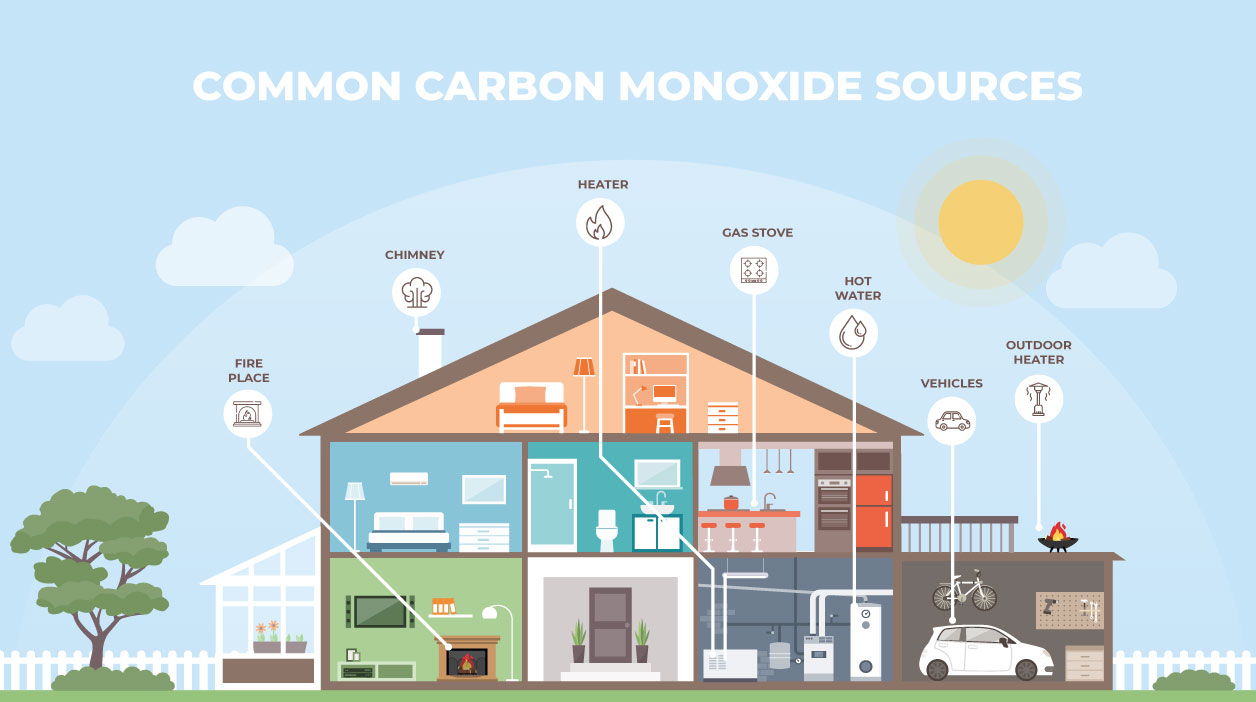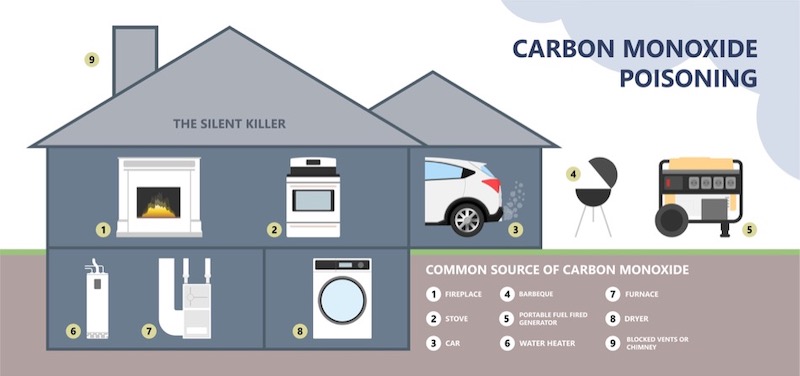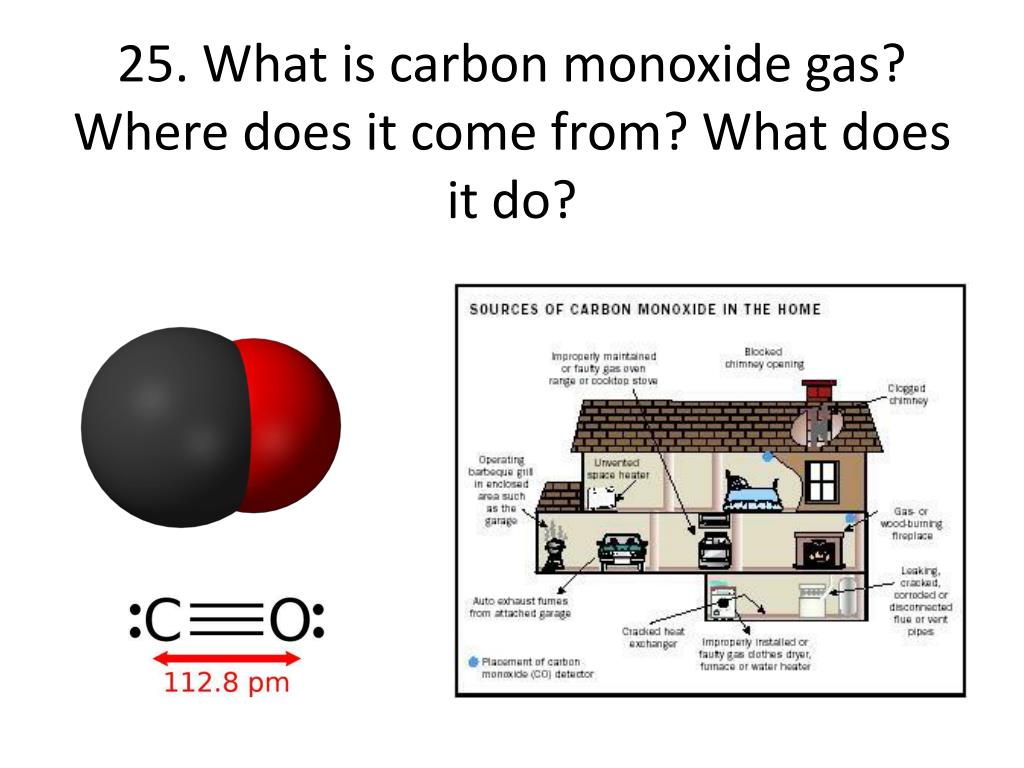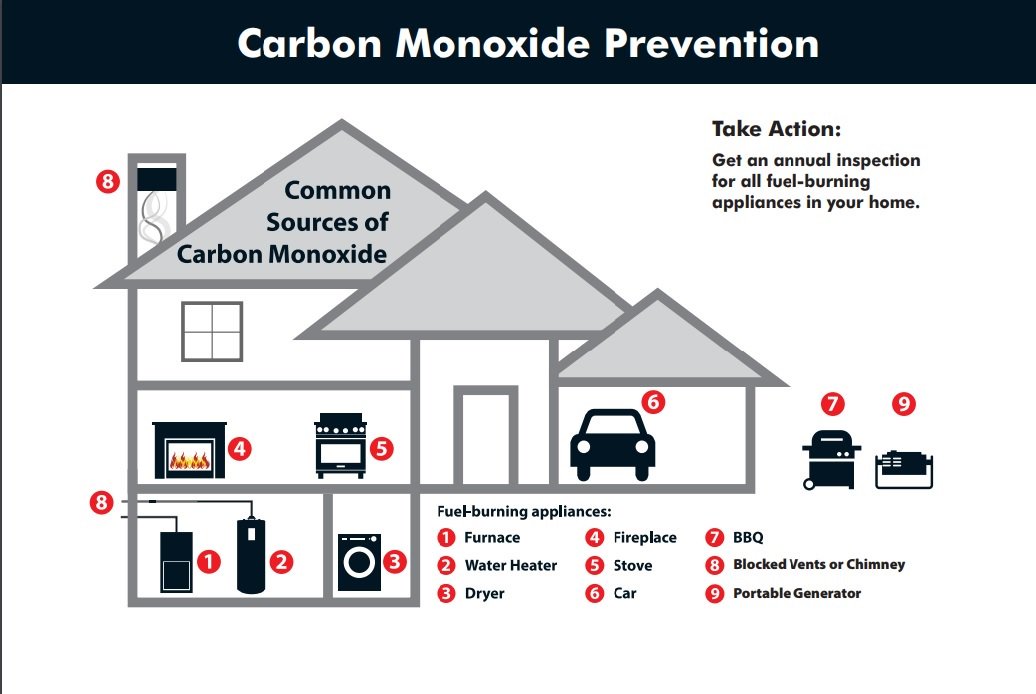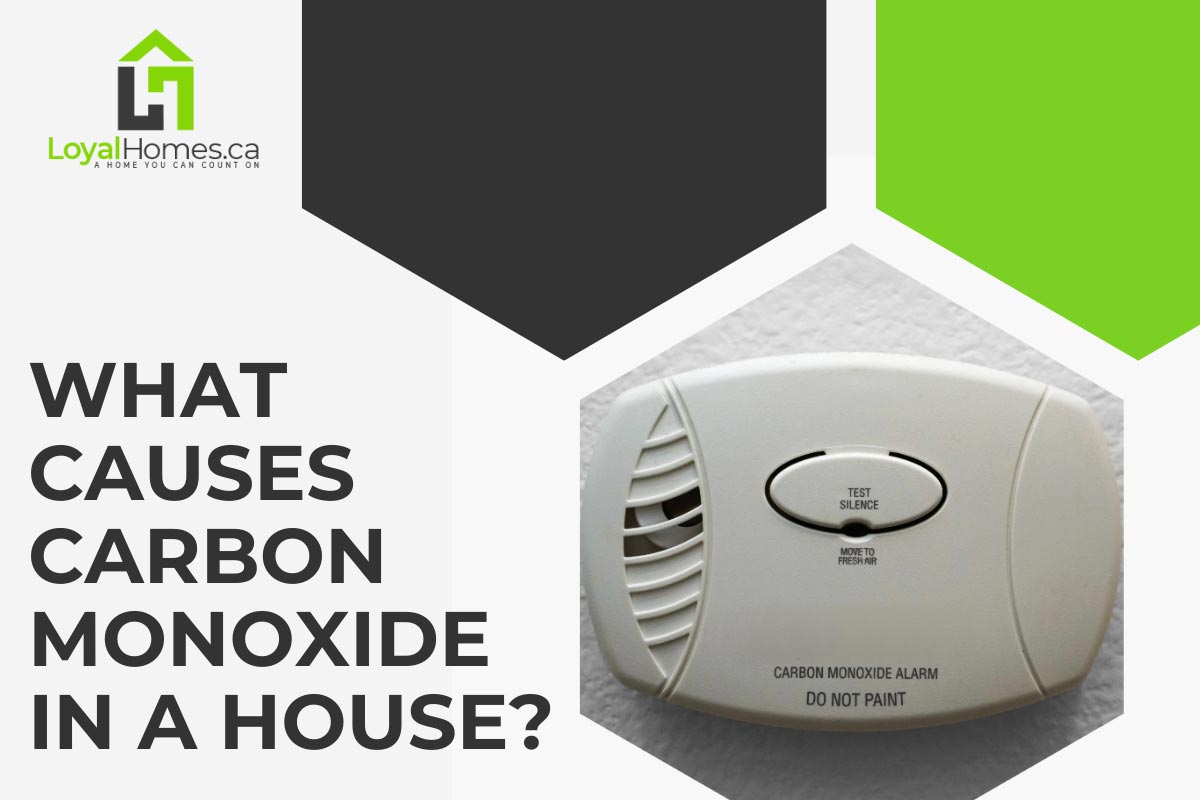Where Does The Carbon Monoxide Come From

Carbon monoxide (CO) is an odorless, colorless gas that can be deadly. Understanding where it comes from in your home and how to troubleshoot potential sources is crucial for your family's safety. This article focuses on common household appliance failures that can lead to CO production and provides a practical, step-by-step troubleshooting guide.
A Common Culprit: The Aging Gas Furnace
One of the most frequent sources of carbon monoxide in homes is a malfunctioning gas furnace. As furnaces age, components can wear down, leading to incomplete combustion of natural gas. This incomplete combustion produces CO.
Symptoms of a potential furnace issue:
- A yellow or flickering burner flame (should be blue).
- Soot around the furnace.
- Rusting or corrosion on the furnace flue pipe.
- A strange odor coming from the vents (not always present with CO).
- Feeling unwell with flu-like symptoms (headache, nausea, dizziness) that improve when you leave the house.
If you suspect a carbon monoxide leak, evacuate your home immediately and call 911. Do not re-enter until cleared by professionals.
Step-by-Step Troubleshooting (Proceed with Caution!)
Before attempting any troubleshooting, ensure you have working carbon monoxide detectors on every level of your home and near sleeping areas. Test them regularly!
Step 1: Visual Inspection - The First Line of Defense
Begin with a thorough visual inspection of your furnace and surrounding area.
- Check the flue pipe: Is it securely connected to both the furnace and the chimney? Look for any gaps, rust, or damage. A disconnected or damaged flue pipe can allow CO to leak into your home instead of venting it outside.
- Inspect the area around the furnace: Look for signs of soot, rust, or corrosion. These can indicate incomplete combustion or leaks.
- Observe the burner flame (if possible): A healthy furnace flame should be blue and steady. A yellow, flickering, or orange flame indicates incomplete combustion and potential CO production. Do not attempt to adjust the flame yourself; this requires professional expertise.
DIY Fix (if applicable and SAFE): If you find a loose connection on the flue pipe, you *may* be able to tighten it with appropriate metal tape. However, if the pipe is significantly damaged or rusted, call a professional immediately. Do not attempt a temporary fix.
Step 2: Check the Power Supply
A faulty power supply can sometimes prevent the furnace from operating correctly, leading to inefficient combustion.
- Ensure the furnace switch is ON: This sounds obvious, but it's worth checking. Locate the power switch (usually near the furnace) and make sure it's in the "ON" position.
- Check the circuit breaker: Go to your electrical panel and check the breaker for the furnace. If it's tripped, reset it. If it trips again immediately, there's a short circuit, and you need to call an electrician. Do not repeatedly reset a tripped breaker.
- Voltage Test (Advanced - Only if you are comfortable and experienced with electrical work): Use a multimeter to test the voltage at the furnace. If you are not comfortable using a multimeter or working with electricity, skip this step and call a professional. Verify that the voltage matches the furnace's specifications.
DIY Fix (if applicable and SAFE): Resetting a tripped breaker. If the breaker continues to trip, call an electrician.
Step 3: Examine the Air Filter
A dirty air filter restricts airflow, which can strain the furnace and lead to incomplete combustion.
- Locate the air filter: It's usually located in a slot near the furnace blower.
- Remove the air filter: Check its condition. If it's dirty, replace it with a new one of the correct size.
DIY Fix: Replacing a dirty air filter is a simple task that can significantly improve furnace efficiency and potentially reduce CO production. Replace the filter every 1-3 months, depending on usage and air quality.
Step 4: Thermostat Settings and Functionality
Incorrect thermostat settings or a malfunctioning thermostat can cause the furnace to cycle improperly, leading to inefficient combustion.
- Verify the thermostat settings: Ensure the thermostat is set to "Heat" and that the temperature is set appropriately.
- Check the thermostat batteries (if applicable): Low batteries can cause the thermostat to malfunction. Replace the batteries if necessary.
- Observe the furnace cycle: Does the furnace turn on and off frequently (short cycling)? Does it run continuously without reaching the set temperature? Either of these issues can indicate a problem.
DIY Fix: Replacing thermostat batteries and adjusting temperature settings. Consider upgrading to a smart thermostat for improved control and energy efficiency.
Step 5: Pilot Light/Ignition System (Proceed with Extreme Caution!)
Working with the pilot light or ignition system of a gas appliance can be dangerous. If you are not comfortable with this, call a professional.
- Pilot Light (Older Furnaces): If your furnace has a pilot light, check if it's lit. If it's not, follow the manufacturer's instructions to relight it. If you smell gas while attempting to relight the pilot light, stop immediately, evacuate the area, and call your gas company.
- Ignition System (Modern Furnaces): Modern furnaces use electronic ignition systems. If the furnace isn't igniting, you may hear a clicking sound. This could indicate a faulty igniter. Replacing an igniter is a more complex repair that usually requires a professional.
DIY Fix (Pilot Light Only and if Comfortable): Relighting a pilot light following the manufacturer's instructions. If you smell gas, evacuate and call the gas company immediately. Do not attempt to relight the pilot light.
When to Call a Professional – Absolutely Essential!
Certain furnace repairs should ONLY be performed by qualified HVAC technicians. These include:
- Any work involving gas lines: Gas leaks are extremely dangerous and can lead to explosions and carbon monoxide poisoning.
- Complex component replacements: Replacing parts like the gas valve, burner, heat exchanger, or circuit board requires specialized knowledge and tools.
- Adjusting gas pressure: This requires specialized equipment and expertise to ensure safe and efficient operation.
- Inspecting the heat exchanger: A cracked heat exchanger can leak carbon monoxide into your home. This requires specialized equipment to detect.
- If you are unsure about any step in the troubleshooting process.
Specific scenarios where a professional is needed IMMEDIATELY:
- You smell gas.
- Your carbon monoxide detector is alarming.
- You see a yellow or flickering flame.
- You suspect a cracked heat exchanger.
- You are experiencing symptoms of carbon monoxide poisoning.
Other Potential Sources of Carbon Monoxide
While the furnace is a common source, other appliances can also produce CO if they are not properly maintained or used:
- Gas Water Heaters: Similar to furnaces, gas water heaters can produce CO if they are not properly ventilated or if the burner is not functioning correctly. Check the flue pipe and burner flame (if visible).
- Gas Stoves and Ovens: Using a gas stove or oven for heating can produce dangerous levels of CO. Never use these appliances for heating your home.
- Portable Generators: Never operate a portable generator indoors or in a garage, even with the door open. Always operate it outdoors, away from windows and doors.
- Fireplaces (Wood and Gas): Ensure the chimney is properly maintained and that the damper is open when using a fireplace. Gas fireplaces should be inspected annually by a qualified technician.
- Cars: Never run a car in a closed garage, even for a short time.
Preventative Maintenance is Key
The best way to prevent carbon monoxide poisoning is to have your fuel-burning appliances inspected and maintained annually by a qualified technician. Regular maintenance can identify potential problems before they become dangerous.
Key preventative measures:
- Annual furnace inspection: Schedule a professional inspection and tune-up every year.
- Regular carbon monoxide detector testing: Test your CO detectors monthly and replace them every 5-7 years.
- Clean or replace air filters regularly: Keep your furnace air filter clean to ensure proper airflow.
- Never use gas appliances for heating: Use your furnace or a safe space heater for heating your home.
- Be aware of the symptoms of carbon monoxide poisoning: Headache, nausea, dizziness, weakness, confusion, and loss of consciousness.
Empowerment Through Knowledge, Safety Through Action
Understanding the potential sources of carbon monoxide and taking proactive steps to maintain your appliances can significantly reduce the risk of CO poisoning in your home. Remember, when in doubt, always call a qualified professional. Your family's safety is paramount.
